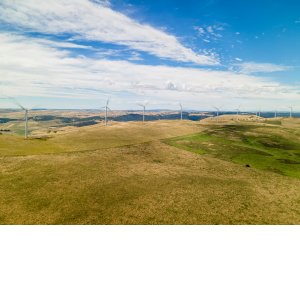
Climate change and biodiversity loss are interlinked. Solutions to these crises must therefore be too, syncing the goals of the Paris Agreement with the Kunming Montreal Global Biodiversity Framework. The deployment of renewable energy sources is critical to mitigating the climate crisis, and to meet the EU’s 2030 target of 42.5% renewable energy, Europe must scale up renewable projects significantly.
As with any expansion of infrastructure, renewable energy projects carry a risk of environmental harm. Concerns over potential impacts on nature and biodiversity in areas where energy infrastructure is frequently sited, have triggered public opposition to and protests against the projects, thus creating delays of several years. The Fast & Fair Renewables & Grids initiative is aiming to change that. The initiative offers a framework for how to implement renewables more fairly, based on five principles that cover topics like benefit sharing, community engagement and nature-positive action. By mitigating the causes of local opposition, such as environmental costs, the initiative offers a blueprint to accelerate local energy transitions in a manner that is fair for all stakeholders.
For energy systems to deliver a positive effect for our communities and natural ecosystems, they must be planned and coordinated, with robust and holistic energy systems and spatial planning, encompassing technical, environmental, and societal considerations. The mitigation hierarchy is central to this approach and has three components: avoiding or preventing negative impacts, minimising and rehabilitating where prevention is not possible, and offsetting any residual impact. To apply the hierarchy, developers and other stakeholders must collaborate to manage challenges like land use conflicts, high costs, limited scientific data and internal project complexities.
A useful example of environmentally-aware energy project planning comes from southwest France, where clean energy provider BayWa r.e. developed a solar project of 41.2 MW. Throughout the development stages, as well as construction and operation, the project prioritised important biodiversity areas. In operation since 2017, the project incorporates comprehensive conservation and restoration strategies aimed at enhancing local biodiversity and protecting vulnerable ecosystems. These measures include conservation of over 50% of wetlands in the project area, protecting the nesting periods of certain species of birds, reptiles, and amphibians by planning different windows of construction, and installing fences designed to facilitate safe wildlife movement. To manage vegetation effectively, rotational sheep grazing is employed as an ecological practice, particularly aimed at protecting the butterfly species False Ringlet (Coenonympha oedippus). Additionally, as an offsetting measure, 173 hectares of degraded wetlands beyond the site encompassing wet meadows, forests, and moors were restored, in partnership with a local environmental organisation.
This example shows critical infrastructure and environmental stewardship can be made compatible. The energy transition is simultaneously an opportunity to center nature; forming synergies between experts, policymakers, local stakeholders and resource managers in both domains is important to make progress. As renewables rollout picks up pace, energy systems must account for adverse impacts on biodiversity and work with nature for fairer outcomes that extend to all living species.
